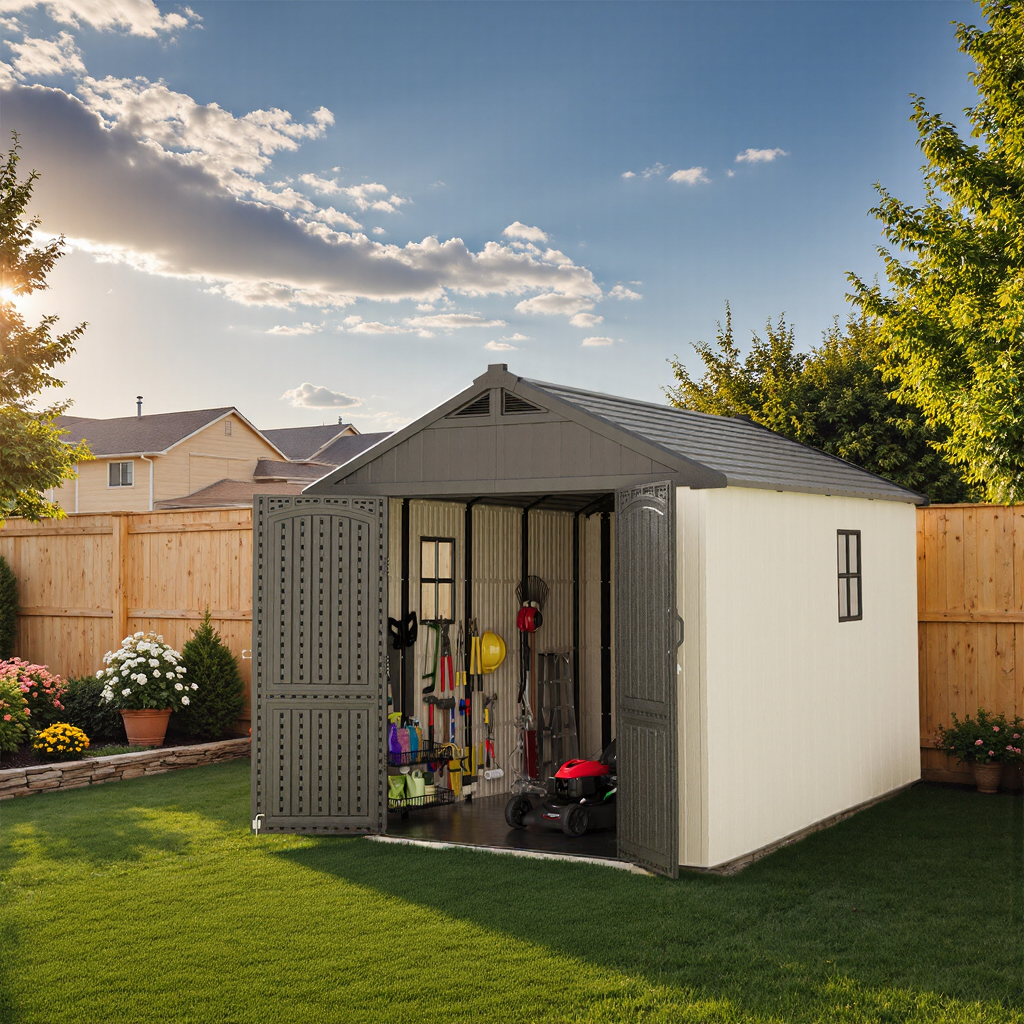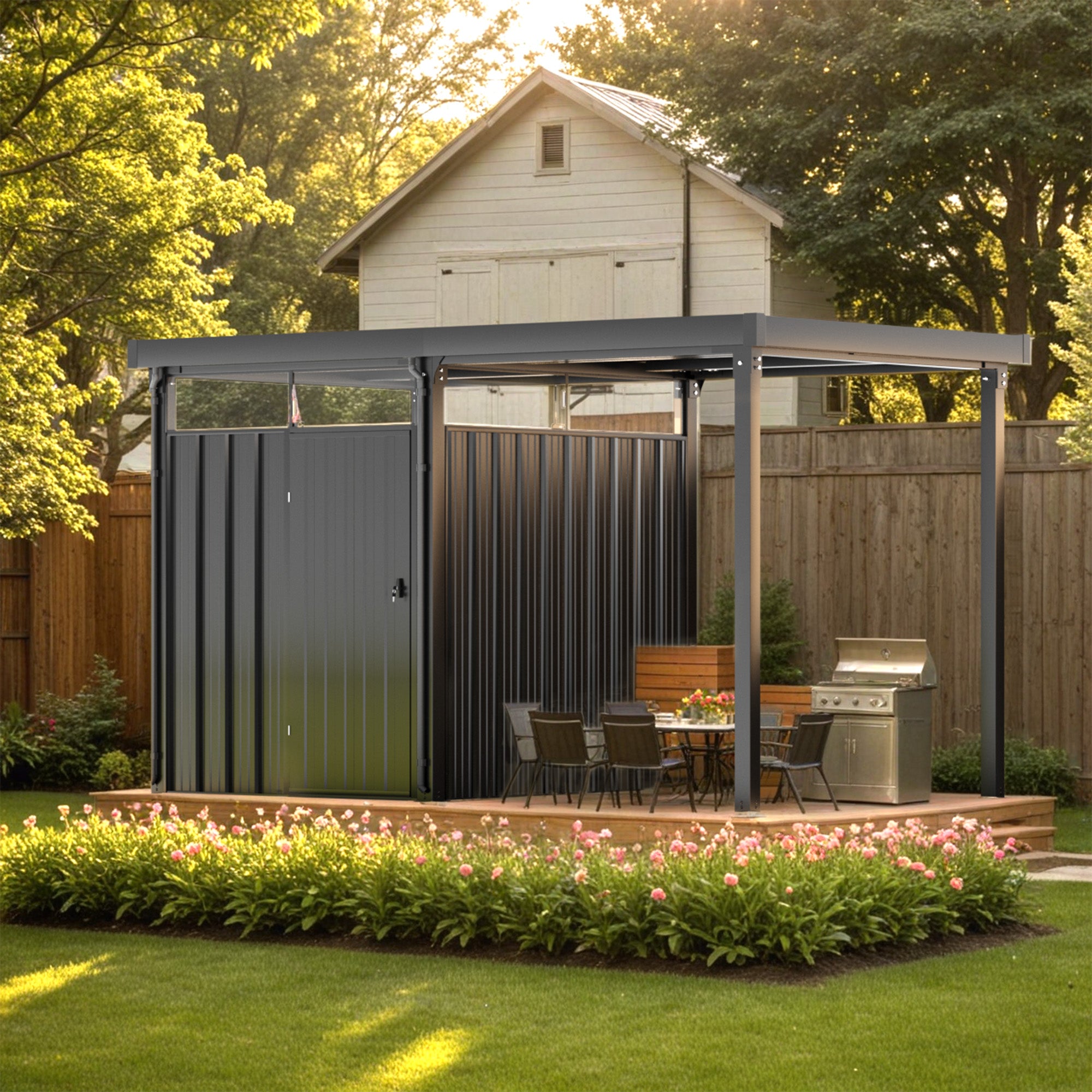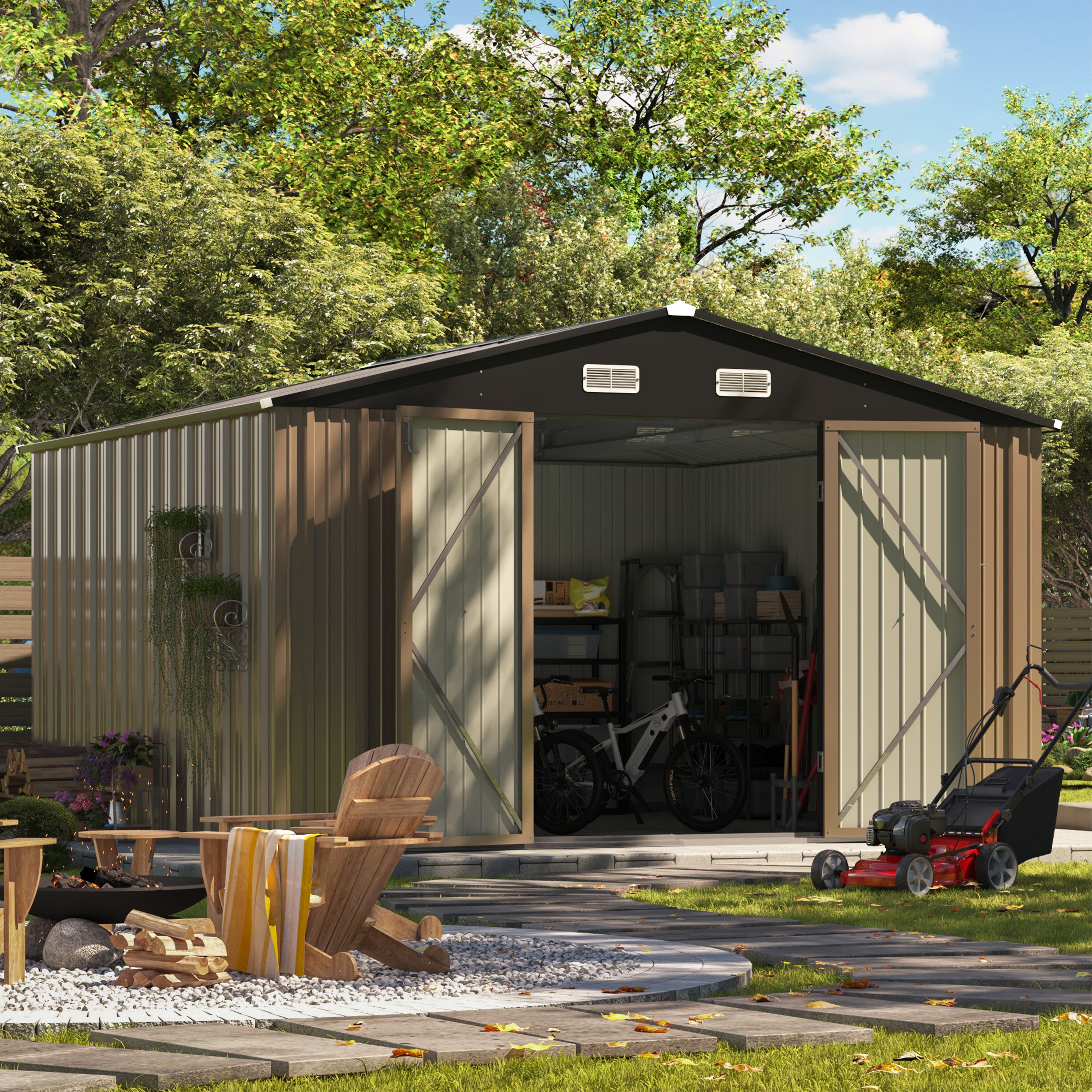Looking to give your backyard shed a fresh new look? Painting a shed is one of the easiest and most affordable ways to upgrade your outdoor space and boost curb appeal.
Table of Contents:[hide]
Why Paint a Shed?
Painting a shed isn’t just about appearances—it’s also about protection. A good shed paint acts as a barrier against sun, rain, snow, and rust, especially for wooden or metal sheds. Regular shed painting extends the life of the structure and prevents costly repairs. Plus, painted sheds can tie together your garden’s aesthetic, making your outdoor space feel more polished and personalized.
What Type of Shed Do You Have And Why It Matters?
Before you grab your brush, it’s crucial to know what your shed is made of—because not all materials take paint the same way. The type of shed you have directly affects the prep work, the kind of paint you need, and how long the finish will last. Let’s break it down:
Wooden Sheds
Wood is the most paint-friendly shed material. It absorbs paint well and allows for vibrant, long-lasting finishes—especially when primed properly. However, wood also requires more maintenance over time, as it’s prone to rotting, warping, and peeling if not protected. Using high-quality paint for shed exterior and weather-resistant primer is a must. If you’re aiming for a classic painted shed look, wood gives you the most flexibility in color and style.
Metal Sheds

Painting a metal shed is all about rust prevention and surface prep. Without proper primer and the right type of shed paint (usually oil-based or direct-to-metal formulas), your efforts may peel or flake within months. Smooth, slick surfaces need to be cleaned thoroughly and sometimes lightly sanded for paint to adhere. But once done right, a painted metal shed can stay fresh for years and resist harsh elements with ease.
Resin/Plastic Sheds

Can you paint a plastic shed like Patiowell? Technically, yes—but it requires a bit more work. These sheds are made from resin or polyethylene, which are designed to be low-maintenance and often don’t hold paint well unless prepped carefully. Light sanding and a coat of high-bond primer are essential. Use paint for plastic shed such as Krylon Fusion or Rust-Oleum 2X Ultra Cover spray paint. While you might not get the same bold coverage as with wood, it’s possible to give your resin shed a tasteful refresh with the right products.
Tools and Materials You'll Need
- Exterior paint for shed (wood, metal, or plastic-specific)
- Weather-resistant primer
- Paintbrushes, rollers, or sprayer
- Drop cloths and painter’s tape
- Sandpaper (fine to medium grit)
- Mild detergent or cleaner
- Caulk or filler for repairs
- Protective gloves and goggles
Step-by-Step: How to Paint Your Shed
Follow these step-by-step instructions to get a professional-looking finish with your chosen shed paint.
1. Clean the Surface
Before applying any paint, your shed needs to be clean. Use a mild detergent mixed with water to scrub away dirt, mildew, cobwebs, and old flaking paint. For heavily soiled sheds, a pressure washer can help—just be careful with older wood or plastic surfaces.
A clean surface ensures that your paint for shed adheres properly and doesn’t bubble or peel later.
2. Make Repairs First
Check your shed for any damage. Fill in cracks or holes with exterior wood filler or caulk. For metal sheds, fix any rust spots using a rust converter or wire brush. Resin sheds should be inspected for surface cracks or weak joints.
Pro tip: Painting over damage traps problems under the surface and can shorten the lifespan of your painted shed.
3. Sand the Surface
Lightly sand wooden sheds to smooth out imperfections and open the grain for better paint absorption. For metal sheds, sanding helps remove oxidation. And for resin/plastic sheds like Patiowell, light sanding is critical for helping the paint for plastic shed stick.
Best practice: Wipe off dust with a damp cloth after sanding.
4. Apply Primer
Primer is essential—especially for bare wood, rust-prone metal, or slick plastic surfaces. Choose a primer that’s appropriate for your shed’s material:
-
Wood: Exterior latex or oil-based primer
-
Metal: Rust-inhibiting metal primer
- Resin/Plastic: Bonding primer or plastic-friendly spray primer
Skip this step and you risk your shed painting peeling or fading prematurely.
5. Start Painting
Apply your first coat of outdoor shed paint using a brush, roller, or sprayer, depending on the size of your shed and desired finish. Use long, even strokes and work from top to bottom to catch drips. For best results, apply two thin coats rather than one thick coat.
Choose the best paint for shed based on your material—acrylic latex for wood, metal enamel for steel, and spray paints for plastic.
6. Dry and Inspect
Let the first coat dry completely according to the paint manufacturer’s directions (usually 4–6 hours). Inspect the shed for any uneven areas, missed spots, or paint runs. Lightly sand between coats if necessary before applying the second layer.
Walk around your painted shed in natural light to catch any imperfections you may have missed indoors.
Best Paint Colors for Outdoor Sheds
Choosing the best paint for outdoor shed use depends on your style and surroundings. Some popular color ideas include:
-
Neutral tones: beige, gray, or off-white for a clean, modern look
-
Earthy greens: blend well with gardens and plants
-
Classic barn red: perfect for rustic appeal
-
Charcoal or black: bold and contemporary
Make sure to choose UV- and weather-resistant paints for sheds to keep colors vibrant.
Maintenance Tips After Painting
To keep your painted shed looking fresh:
- Check for peeling or cracking annually
- Clean it with a hose or damp cloth every few months
- Touch up scuffs with leftover shed paint
- Avoid stacking items directly against painted walls to reduce wear
FAQs
Can you paint a resin shed like Patiowell?
Yes—just clean it thoroughly, sand lightly, and use a high-adhesion plastic spray or acrylic paint.
What’s the best time of year to paint a shed?
Late spring or early fall offers the best temps and low humidity. Avoid painting in direct sun or rain.
How long does shed paint last?
Quality paint for sheds can last 5–10 years depending on the material, climate, and paint quality.
Do I need to sand between coats?
It’s not always necessary, but lightly sanding between coats on wood can help achieve a smoother finish.
Conclusion
Giving your shed a fresh coat of paint not only improves its look but also helps extend its life. Whether it’s wood, metal, or plastic, with the right tools and approach, painting garden sheds can be a rewarding weekend project. Ready to transform your space? Grab your shed paint and get started!
Let me know if you’d like a printable version or a matching how-to video guide!
Diana Mason
Hi there! I’m Diana Mason, the chief editor of Patiowell brand. With over 15 years of diving deep into the world of outdoor furniture, I’ve developed a keen eye for what makes outdoor spaces truly special. I love sharing tips and inspiration to help you create your perfect backyard retreat. Our blog is a reflection of my passion and expertise, featuring only the best pieces that I personally vouch for. Thanks for stopping by—I can't wait to help you transform your outdoor living space!







Leave a comment
All comments are moderated before being published.
This site is protected by hCaptcha and the hCaptcha Privacy Policy and Terms of Service apply.